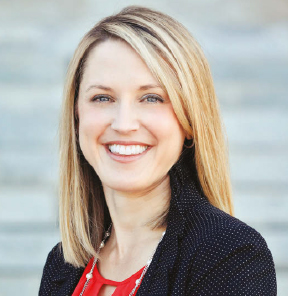It’s Part of Who We Are
“When I first brought up some of these new ideas you would have thought I suggested we all go to the moon,” said Michelle Trueblood, chief human resources officer at The Horton Group. She and Sarah Newell, talent acquisition manager (who’s question spurred this article), are passionate about the impact soft benefits have on recruiting and retention. “It’s part of a strategic, comprehensive HR strategy that we know constantly needs to change,” Newell said. “For example, a relaxed dress code was once very cutting edge. It’s still great but we keep innovating for the best possible employee experience.”
Caring for employees is in Horton’s DNA. They recognize that soft benefits can cost money. The agency sees this as a great way to reinvest in the company and maintain its independence. Friday breakfast, “food galore,” on-site gyms and fitness programs, on-site dieticians and health clinics are just a few examples of what’s available. Trueblood and Newell also challenge the conventional thinking that soft benefits don’t yield tangible results.
- They’ve witness employee referrals become the agency’s No. 1 source for new talent.
- Millennials going through summer internships often convert to new hires because they haven’t found another company with comparable benefits.
- Teams tapping into soft benefit programs are among the highest performing and have the best retention.
- Social media followers have increased exponentially because of testimonials.
Getting to the Heart of What Matters
Jeff Lightner, president and CEO of Marsh & McLennan Agency’s Midwest Region had an eye-opening experience about soft benefits one snowy winter morning. An employee commented in the elevator that she wished it was 20 degrees not 22 degrees so the Weather Rule would be in effect. Lightner asked, “Would wearing jeans really have given you a better outlook on coming to work today?” She said yes. In that moment, Lightner said soft benefits was about “getting to the heart of what really matters.”
Lightner has since witnessed a “pay it forward” mentality blossoming throughout their staff. “They want to give back because of what they have received,” he said. He’s seen them band together for one another during tough times, raising money to help a colleague with a family crisis. He said, “I really have to come up with another word for team-building. The executives and I can sit around, dreaming up team building outings, but nothing is better than when they go into the community and serve alongside one another.”
Casual dress and Volunteer Time Off (VTO) are just two examples of where he sees soft benefits making a direct impact. Additional programs include healthy, fresh food delivered daily impacts employee health and plan costs. A formal work-from-home program became the perfect Disaster Recovery Plan. Most importantly, Lightner said these programs hold leaders accountable to get involved. “What is your social impact?” is the first question Millennials ask in an interview,” he said. “There was a time our managers fumbled their answers. Not anymore. They know what MMA’s doing in the community because they are doing it too.”
Food For Thought
Five Places Where Your Agency Should Promote Soft Benefits
- The Interview. Ask candidates what they desire. Share your company’s offerings.
- Benefits Overview. Right next to what employees expect; share the unexpected.
- Social Media. Pictures say 1,000 words when employees love your awesome perks.\
- Promotional Materials. Employee testimonials, Glassdoor reviews and career pages.
- Job Advertisements. Mentioning compensation and benefits sharply increases applicant rates.
Was this article valuable?
Here are more articles you may enjoy.



 Freight Broker Says $400K in Lobster Meat Stolen in Fictitious Pickup
Freight Broker Says $400K in Lobster Meat Stolen in Fictitious Pickup  Aon Extends Employment Agreement With CEO Case
Aon Extends Employment Agreement With CEO Case  Abundant Reinsurance Capacity Accelerates Market Softening During 1/1 Renewals
Abundant Reinsurance Capacity Accelerates Market Softening During 1/1 Renewals  CRC Group Signs Agreement to Acquire Euclid Transactional
CRC Group Signs Agreement to Acquire Euclid Transactional 



